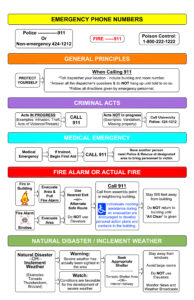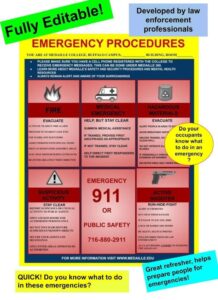Having readily available procedures streamlines response efforts, minimizing the impact of releases. Rapid access to critical information ensures appropriate actions are taken swiftly, mitigating potential harm to human health and the environment. Such a resource also aids in demonstrating regulatory compliance and preparedness, reducing potential liabilities. Clear and concise instructions improve communication and coordination among response teams, fostering a more effective and efficient response.

The following sections will explore key components of effective response procedures, including notification requirements, containment strategies, and post-incident reporting. Furthermore, best practices for developing, implementing, and regularly reviewing these crucial documents will be discussed.
Key Components of an Effective Hazardous Waste Contingency Plan Quick Reference Guide
A well-structured quick reference guide is crucial for efficient response to hazardous waste incidents. The following components ensure comprehensive coverage and facilitate rapid response:
1: Emergency Contact Information: This section lists essential contacts, including internal response personnel, local emergency services, and regulatory agencies. Clear contact information ensures swift communication and coordinated efforts.
2: Potential Release Scenarios: Identifying potential release scenarios specific to the facility allows for tailored response procedures. This component anticipates potential hazards and guides appropriate actions.
3: Step-by-Step Response Procedures: Clear, concise instructions for containing spills, minimizing exposure, and initiating cleanup efforts are essential. Procedures should be easy to follow and readily accessible during emergencies.
4: Required Equipment and Supplies: A comprehensive list of necessary equipment and supplies, including personal protective equipment (PPE), spill containment materials, and cleanup tools, ensures preparedness for various scenarios.
5: Evacuation Procedures: Clear evacuation routes and procedures are vital for safeguarding personnel and surrounding communities. This component should specify assembly points and communication protocols.
6: Post-Incident Reporting Requirements: Detailed instructions on reporting requirements, including timelines and designated contacts, ensure compliance with regulatory obligations.
7: Training and Drills: Regular training and drills are essential for familiarizing personnel with the quick reference guide and ensuring effective implementation during emergencies.
8: Map of facility: Schematics of the facility are vital in helping emergency responders locate the release, important shut off and control valves, and other key building systems.
Effective contingency planning requires readily available procedures, pre-identified resources, and trained personnel. These components, when integrated into a concise quick reference guide, equip facilities to effectively manage hazardous waste releases, minimize environmental impact, and ensure regulatory compliance.
How to Create a RCRA Contingency Plan Quick Reference Guide
Developing a robust quick reference guide requires careful planning and execution. A systematic approach ensures comprehensive coverage and facilitates effective emergency response.
1: Conduct a Facility Assessment: Thoroughly assess the facility to identify potential hazards, vulnerable areas, and necessary resources. This assessment informs the scope and content of the guide.
2: Identify Key Personnel and Contacts: Compile a comprehensive list of emergency contacts, including internal response teams, local emergency services, regulatory agencies, and relevant contractors.
3: Develop Step-by-Step Response Procedures: Create clear, concise instructions for various release scenarios. Procedures should cover containment, cleanup, evacuation, and communication protocols.
4: Outline Required Equipment and Supplies: List necessary equipment and supplies, including personal protective equipment (PPE), spill containment materials, decontamination solutions, and monitoring devices.
5: Establish Communication Protocols: Define communication channels and procedures to ensure effective information flow during emergencies. This includes internal communication within the response team and external communication with relevant authorities and stakeholders.
6: Incorporate Training and Drills: Regular training and drills are essential for familiarizing personnel with the quick reference guide. Practical exercises reinforce procedures and enhance response capabilities.
7: Design a User-Friendly Format: Present the information in a clear, concise, and easily accessible format. Utilize visual aids, such as flowcharts and diagrams, to enhance comprehension.
8: Review and Update Regularly: Regularly review and update the quick reference guide to reflect changes in regulations, facility operations, or best practices. This ensures the guide remains current and effective.
A well-designed guide, combined with comprehensive training, equips facilities to effectively manage hazardous waste incidents, minimize environmental impact, and maintain regulatory compliance. Periodic review and updates are crucial for continuous improvement and sustained preparedness.
Effective management of hazardous waste necessitates meticulous preparation for unforeseen events. A readily accessible and comprehensive resource containing concise procedures for responding to releases is critical for minimizing environmental impact and ensuring regulatory compliance. Such a document provides essential guidance for personnel involved in emergency response, outlining steps for containment, cleanup, and reporting. Regular training and drills, coupled with periodic review and updates, are vital for maintaining preparedness and ensuring the efficacy of response efforts.
Prioritizing preparedness through the development and implementation of a robust plan is an investment in environmental protection and operational continuity. Proactive measures, such as those outlined, contribute significantly to minimizing the risks associated with hazardous waste management and fostering a culture of safety and responsibility.



